|
Running is one of the most popular recreational sports in the United States. What I love about running is that it is a lifelong sport. Attend any local 5k race and you will see age ranges from 12 year olds to 80 year olds running the same race. It’s also a sport that doesn't require really fancy equipment to burn a lot of calories. (I have already discussed the main expense in running, shoes, in my previous blogs.) Another great thing about running is depending on your preference or your mood; you can run in groups or by yourself. With all of the great benefits of running, I find it interesting that runners rarely focus on technique or specific skill training for running. Maybe this is why over 1/2 of all runners injure themselves every year. At Team Chiropractic and Rehab of Ames, it is our goal to keep runners out of pain and prevent as many sports injuries as possible. It you want to become a good golfer, of course you would buy a set of clubs. But, often new golfers will pay for golf lessons. Actually, all ranges of golfers find it advantageous to hire a Pro to help them with their swing. Not only does coaching in golf make the golfer a better player, but it can help prevent injuries that occur with poor swing mechanics. For some reason, the idea of swing analysis for performance and injury prevention has not translated into the running community as much as the other recreational sports like golf. In this blog we will discuss one of the measurable aspects of the running gait, foot strike, and how effects performance and injury rate. (All of the information I’m going to share with you is very practical, however runners that have certain anatomical variances or injuries should consult a qualified health professional before trying to change their gait) It All Starts At the Crash Zone: What I call the “crash zone” is the area of the foot that first contacts the ground while striding. The contact that a runner uses when their foot initially contacts the ground, determines their efficiency/speed, footwear selection, and their ability to absorb shock. Foot strike also directly relates to the susceptibly for most common running injuries: Shin Splints, Patellar tendonitis, IT Band Syndrome, Bursitis, Hamstring Tendonpathy, Plantar Fasciitis, Stress Fractures. There are basically three different ways to contact the ground when running:  Heel Strike- When the outside corner of the heel first impact the ground and then the foot rolls through to the mid and forefoot before toeing off. This type of impact mimics the foot contact while walking. 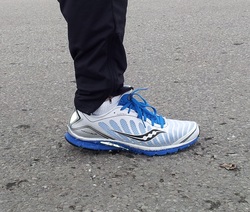 Midfoot Strike- When the first part of the foot that touches the ground is slightly behind the ball of the foot. After the initial contact, often the heel will briefly touch the ground before the gait cycle progresses to supination and the foot leaves the ground through toe off. 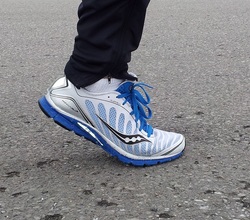 Forefoot strike- This is the classic “toe runner”. The first foot impact will be on or slightly in front of the ball of the foot. Rarely does the heel touch the ground with this type of running foot strike. Most sprinters use this contact; however there are people that use this type of contact to run long distances as well. Running with a Flat Tire: 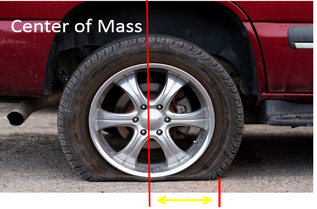 Imagine if you raced two identical cars of the exact same year and model, but one car had a flat tire. It is quite easy to guess which car would win in this race. If you look at the picture of the flat tire below, you can see the large distance between the center of mass over the axil and the tipping point of the wheel. The greater the distance the more energy it requires to keep the wheel rotating. The same goes with running form. Runners who heel strike will have a foot impact at greater distance from their center of mass then an individual who impacts on their midfoot or forefoot. Most heel strikers are what we term “over striders”. Over striding puts them at a disadvantage biomechanically to preserve their momentum by reaching their leg out further from their body to heel strike (running with a flat tire). It may seem mathematically advantageous for the heel striker with the long over stride when running long distances. The longer the stride, the less steps they need to take, right? Wrong, this is the most common amateur running mistake. Stride length is not as important as stride rate in any form of human running (sprinting or distance). Let’s do the math to prove this point: Assume that a 5 foot tall individual wants to run a mile. Typically your jogging stride length is just below your height. Studies show that the average stride length for armature runners is only 120 strides per minute (spm). - A typical heel striker runner runs at 120 spm x 4.5 foot stride = 540 feet per min (just under 10 min mile) - A heel strike runner who really over strides at 120spm x 5 foot stride= 600 feet per min (9 min mile) - A mid or forefoot striker who has a shorter stride but a faster cadence can do 160spm x 4 foot stride= 640 feet per min (8:15 mile) You can see that even with a much shorter stride length, the faster cadence or stride rate, ran much faster than even the supper over strider. By the way, 160 spm is a realistic goal for most recreational runners. An elite professional runner usually has a stride rate of 180-200 spm. Running with a Flat Tire While Stepping On the Breaks: Mathematically it should make sense why heel striking and over striding reduces running efficacy. But, anatomically and physiologically, heel strikers are at a disadvantage as well. By fully extending the leg to heel strike the runner does two things that put their bodies at a disadvantage (turn on the breaks). First, the extended heel striking leg has to fully lengthen the hamstring (the rear muscle to the leg). Weight lifters know that a long muscle is not a strong muscle. Running is all about elasticity in the muscle and tendons of the legs. When the muscle length is in a neutral position its tension to force relationship is at its maximum. However, when a hamstring is completely stretched out to because of the over striding, it loses a majority of its elastic springiness, leading to a slower cadence, more energy wasted by the muscle, and a decreased ability to absorb shock (can you say hamstring tear?). The second physiologic disadvantage of over striding is the body has to isolates muscle use. For example the quad (front leg muscle) has to fully contract to extend the leg fully to reach the heel contact. Verse in a midfoot strike the leg contacts the ground perpendicularly to the ground, letting both the hamstring and quad muscle function in a neutral length, which improves muscle elasticity and shock absorption. There is one other disadvantage biomechanically to heel striking while running. To get the foot in a position to heel strike, the body needs to move up and down vertically more to let the heel travel over the ground before striking. This is a big waste of energy and increases the ground impact force on every stride. Usually the objective with running is to use our energy to move forward, not up and down. The best graph to visually explain the differences in force transmission in different foot striking patterns is below. If you notice the one big difference in the parabolic arcs is the sharp initial peak formed when the heal striker first impacts the ground. Imagine the arc of the graph was that of path of a pebble that you toss to someone. On the curve of the midfoot striker the curve was very controlled and smooth, therefore the pebble would be easy to catch. Imagine on the heal strike graph that we took the pebble and placed it in a sling shot and then fired it. That increased rate of force at the impact of heel strike is like the pebble traveling at a much faster rate and can cause injury when trying to catch it. If the rate of the impact force is too fast, the human body cannot “catch” or absorb the forces effectively, meaning the bones, tendons, ligaments and muscles are susceptible to injury. How Do Shoes Fit In? Because most recreational runners have been exposed to high drop running shoes their whole lives, we have tricked our bodies into thinking it’s OK to hit the ground with our heels while running. I have discussed the reasons for this in my previous blogs on minimalist shoes and shoe fitting. It’s interesting how humans have been running for millions of years, yet within a few decades of wearing athletic shoes, many of us have completely forgotten how to run effectively and safely. If you want to make a change to running on your mid foot, find a shoe with a lower drop and a wide toe box to let your foot expand when running. However I do caution you that changing to a zero drop shoe “cold turkey” can be dangerous. Give your body time to transition to a new shoe, vary the shoes over the week and start with a hybrid shoe first before a full zero drop shoe. What about Forefoot Running: As I mentioned earlier, forefoot running is mostly done in sprinting. Running on the forefoot does lead to faster stride rates, but there are some distinct disadvantages to forefoot running for a long distance. First, just like heel striking, forefoot striking causes muscle to work in isolation and in shortened or elongated states. Forefoot strikers often have injury problems with their calf muscles because they have to contract and shorten during most of their gait cycles, leading to strains, tears and Achilles injuries. Also landing on the forefoot is not as stable as a midfoot strike (imagine running in high heel shoes). This instability will put the tendon and ligaments at risk (ankle sprains and Achilles tendonitis). Finally and not a big surprise, toe runners will have issues with stress fractures and injuries to their toes, the function of the four smaller toes is to help with balance, not to absorb shock on impact. How to Make a Foot Strike Change: Changing your gate is like learning to write with your non-dominant hand. You may have spent years running with a heel strike, it is imposable to change that overnight. I suggest a transition period of 2-3 months to make a gate change. First it take muscles several week to change in length, you can only expect injuries if you don’t let your body slowly adapt to the new running technique. Next there is the mental aspect of changing your form. Most people like to run because it lets them turn off their minds and relax. When you try to change your gait, you have to be consciously aware of every new movement your body makes. It will again take several weeks for this new running form to become reflexive or unconscious. I suggest in the beginning of the transformation, you only focus on form and technique for 1-2 minute periods during your run. For example after every mile, you focus on technique for an 1/8th of the next mile. Making the change to a midfoot strike is well worth the effort, you will be less susceptible to injury, and be a more efficient and faster runner!
11 Comments
Jennifer
8/17/2014 05:42:07 pm
Good article!
Reply
Aileen
10/12/2014 06:21:22 am
Excellent resource!
Reply
Doug
12/13/2014 09:23:05 am
Well done!
Reply
john
5/19/2015 03:55:47 pm
thanks for the help
Reply
Paul Lim
9/23/2015 10:31:40 am
Reply
Susanne
11/7/2015 11:11:57 am
Good resource. You really need to proof-read.
Reply
Ocean Zhang
12/24/2015 01:40:04 pm
nice explanation and illustrations. However, this seems overly biased toward midfoot striking. There have been studies on the efficiency of foot strike. The slower the pace, the more efficient it is to heal-strike (try speed walking with a midfoot strike), and as the pace increases, midfoot becomes more efficient, then forefoot strike reins supreme at sprint speeds. The pace at which midfoot strike becomes more biomechanically efficient than heel-striking for most people is in the 7 to 7:30 min range.
Reply
JD
3/29/2016 09:01:51 am
Under no circumstances should heel striking be considered "efficient" in terms of running. Walking and speed walking? Yes. But running? Never.
Reply
Oliver Brown
1/29/2016 04:37:34 pm
Could you please site your references
Reply
Rajesh
11/15/2021 04:29:06 pm
Useful article written well
Reply
Leave a Reply. |
AuthorDr. Chris Feil Archives
June 2024
Categories
All
|
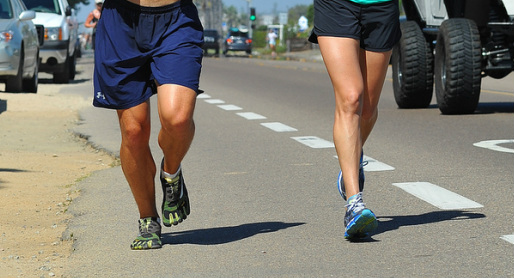
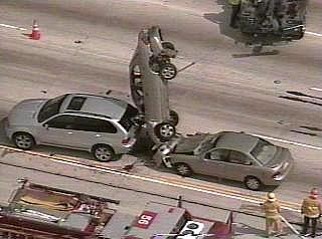
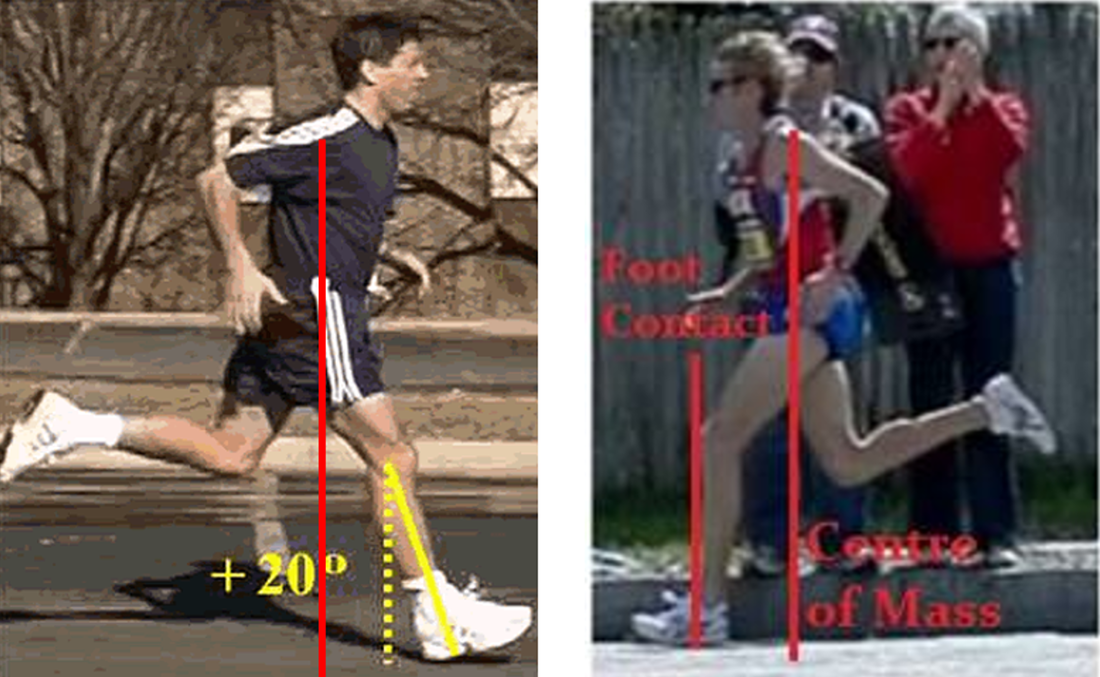
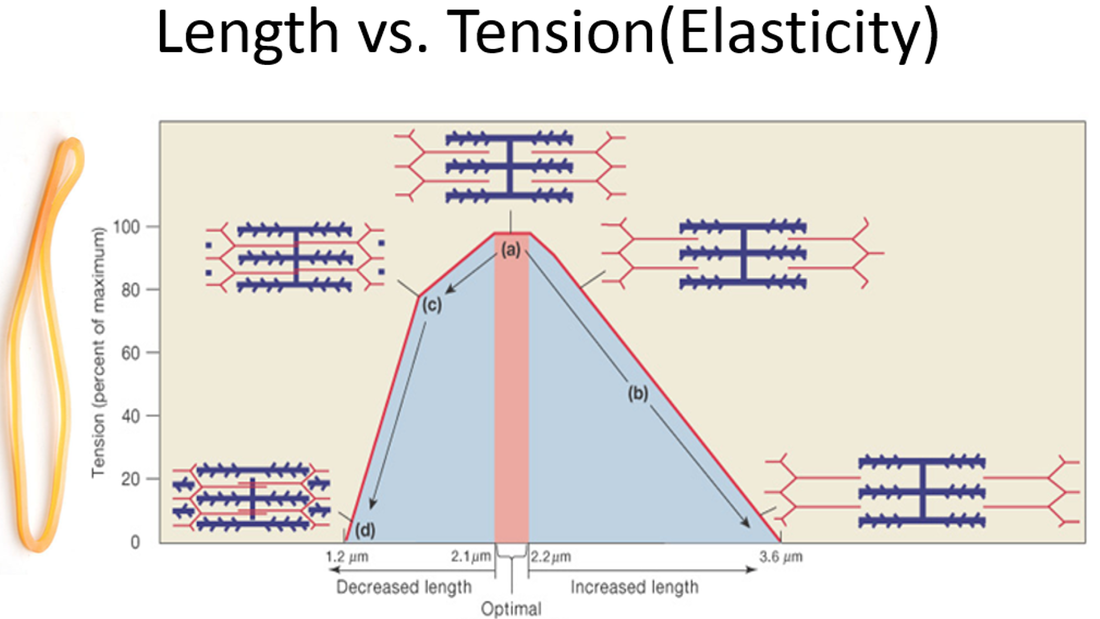
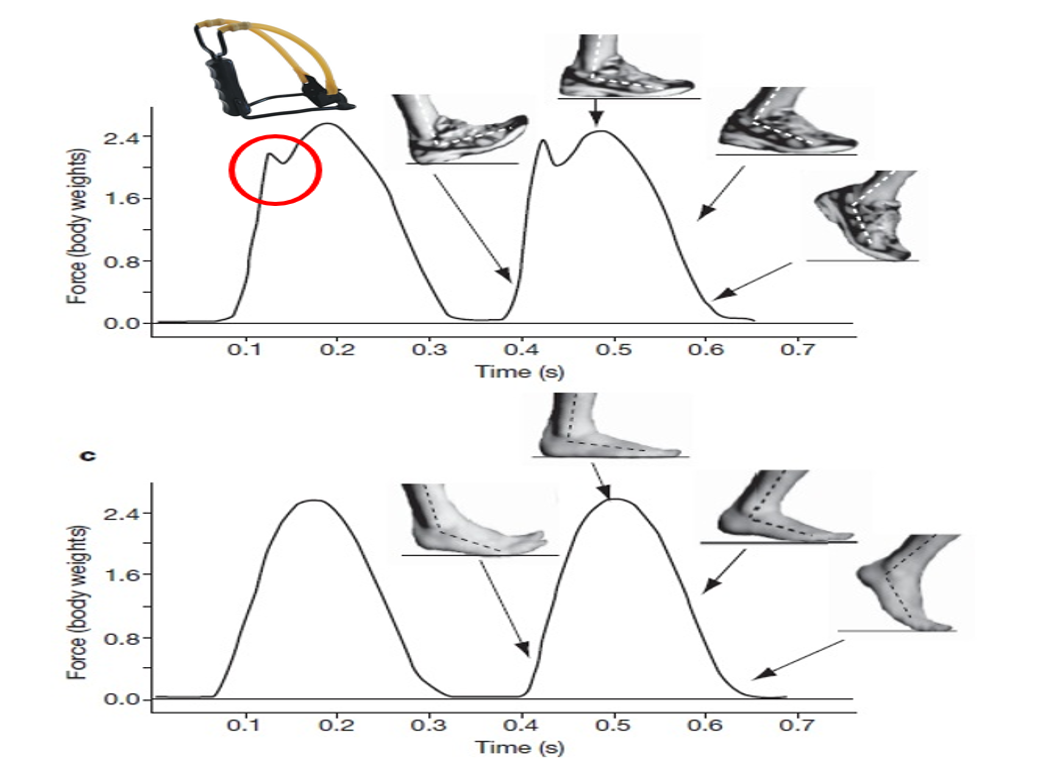
 RSS Feed
RSS Feed